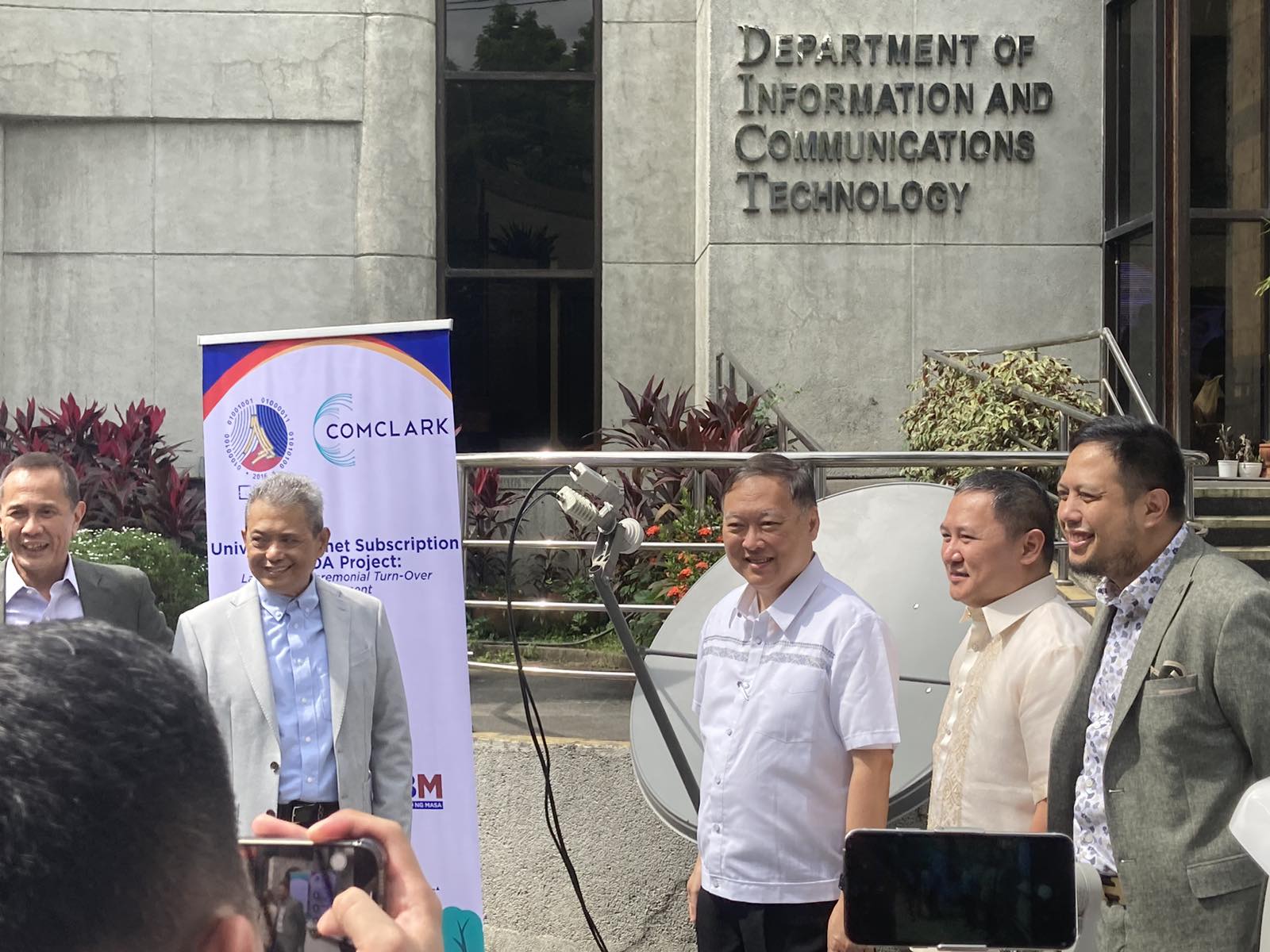ComClark mulls long-term free Wi-Fi to remote areas
Donates P1.1 B worth of equipment
In a bid to help the national government narrow the digital divide in the country, ComClark Network and Technology Corp., the parent company of Converge ICT Solutions Inc., is seeking to sustain its efforts of bringing free Wi-Fi services to geographically isolated and disadvantaged areas (GIDA) for the long-term.
ComClark said this at the turnover ceremony of its satellite and fiber equipment to the Department of Information and Communication Technology (DICT) worth P1.1 billion for its Universal Internet Subscription (UIS) for GIDA project on Tuesday, Nov. 21 at the DICT Office in Quezon City.

ComClark Chief Operations Officer (COO) Benedicto Bulatao told Manila Bulletin that the firm hopes its current partnership with the DICT as a provider of equipment and technical services for the UIS-GIDA project will continue for the years to come.
"It should be renewed. If it's not renewed, then the P1 billion spent on the equipment will be wasted. Why would you spend another billion? It has to be sustainable. That's why its a managed service. I think the current administration is very practical and they know what to do," said Bulatao.
He emphasized that the rollout for the equipment will utilize a "holistic approach" with ComClark being involved in the deployment and operations to ensure the satellite terminals and fiber technologies are functional and up-to-capacity.
"I think this was the problem in the past. It was not a managed service because they wanted to bring down the cost. That's the problem. After one year, [the terminals] are being used as laundry hangers. It's wasted infrastructure. There needs to be continuity in order for the infrastructure to not go to waste," said Bulatao.
The COO shared that the project with DICT cost P1.1 billion overall, which includes mixed satellite and fiber technologies and all kinds of inputs from various stakeholders such as systems integration, transportation, engineering, and access to the satellites which are owned by a third party.
He noted that the biggest cost was in the logistics aspect of the project due to the difficulty and expenses incurred in simply entering the 2,000 identified GIDA areas.

For the rollout, Bulatao said that more than 500 very-small-aperture terminals (VSATs) and over 1,400 fiber technology equipment were turned over to the DICT for deployment. The VSATs will be distributed to GIDA areas such as those situated on hills, mountains, and other far-flung sites, while the fiber tech will be placed at fiber-enabled access points in viable geographical terrain.
There are two kinds of VSATs -- the transportable VSAT that is installed at a fixed spot where the signal is the greatest, and the satellite-on-the-move terminal that has portable antennas that can be hooked on to moving vehicles like cars or watercrafts.
Around 34 Satellite-on-the-move terminals with a carry-on case and a genset, we're handed to DICT for distribution to its regional offices.
Bulatao noted the advantage of the the satellite-on-the-move terminals which can best provide internet connections to people in crises, especially situational emergencies wherein people need to constantly act fast and move. These terminals can simply be turned on after being positioned anywhere outside with a boosted signal.
"I am advocating for the satellite-on-the-move because it's a "zero install" system. The traditional [VSAT], you need four to five people to carry them. This one, you simply have to turn on, but it's more expensive. When you look at the long-run and it's applicability, perhaps a time will come when the cost for these will go down. That is the most suitable application because you no longer need to deploy people," he said.
ComClark's equipment will be able to provide a 145 gigabit (MIR) bandwidth capacity, which enables beneficiaries to access seamless and uninterrupted connectivity. The project is currently community-based, meaning the terminals can power a particular, isolated area like a small school where the neighborhood can flock to connect to the wifi.
Bulatao noted that in order to distribution a network to power a whole town, a different distribution technology is needed, citing the cellular networks like LTE.
"The satellite is only [for] connectivity. The satellite in itself, you can't access with a common communication device. You have to put a wifi, which enables you to connect to the internet. The satellite enables you to connect to the network," he explained.
Currently, the UIS-GIDA project tracks 4,741 active sites in 1,871 locations, connecting areas in 17 regions of the country. A total of 806TB of internet data has already been consumed by the public to date. 97 percent of the sites have been activated and are expected to be completed by the end of 2023.
We Are IT Philippines, Inc. and Telered Technologies and Services Corp. also help DICT and ComClark with the supply of the managed services for the project.
"We are putting marginalized communities and groups front and center of the digital agenda. We are honored to be in close partnership with the DICT in this nationwide effort to bring connectivity to the farthest reaches of the country," said Bulatao.
Gracing the ceremony were DICT Secretary Ivan John Uy and Undersecretary Jeffrey Ian Dy. Dy said the DICT aims to establish 25,000 new access points for the project in 2024.